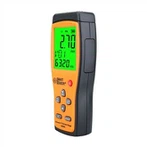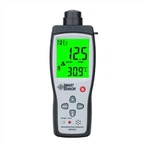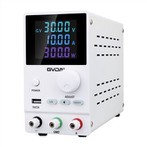Analysis of the current measurement principle of the clamp meter
Clamp meter is essentially made up of a current transformer, a clamp spanner and a rectified magneto-electric system with a reaction force meter.
A clamp meter works on the same principle as a transformer. The primary coil is the wire that passes through the clamp core, which is equivalent to the primary coil of a 1-turn transformer, which is a step-up transformer. The secondary coil and the ammeter for measurement form the secondary circuit. When the wire has an alternating current through, it is this turn of the coil produces an alternating magnetic field, in the secondary circuit produces an induced current, the size of the current and the ratio of the primary current, which is equivalent to the inverse ratio of the number of turns of the primary and secondary coils. Clamp ammeter is used to measure large currents, if the current is not large enough, you can increase the number of turns of the primary conductor in through the clamp meter, at the same time the number of measured current divided by the number of turns.
Clamp ammeter through the core of the current transformer winding on the secondary side of the core and connected to the AC ammeter, its primary winding that is through the centre of the transformer measured wire. The knob is actually a range selector switch, and the spanner is used to open and close the movable part of the core of the transformer so that it can be clamped into the measured conductor.
Measurement of current, press the spanner, open the jaws, the measured current-carrying conductor placed in the middle of the through-core current transformer, when the measured conductor has an alternating current through the alternating current flux in the transformer vice-side of the winding induces a current, which passes through the coil of the electromagnetic ammeter, so that the pointer is deflected in the dial scale pointed out in the measured current value.
After placing the measured wire into the window through the core button, care should be taken to ensure that the two faces of the jaws have a good fit and that no other objects are in the middle; the minimum range of the clamp meter is 5A, and the display error will be larger when measuring smaller currents. This can be energised wire in the clamp meter around a few weeks and then measured, the resulting reading divided by the number of turns is the required results.





